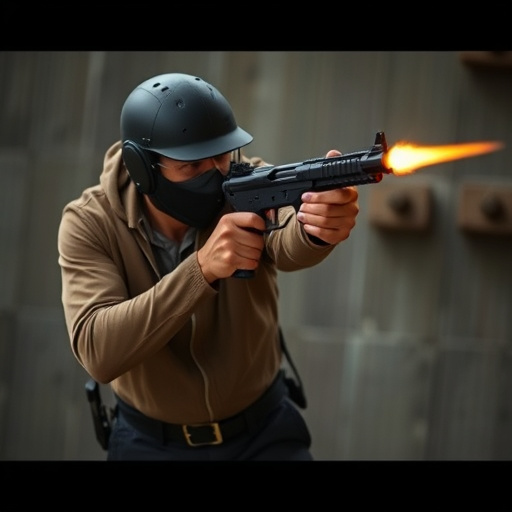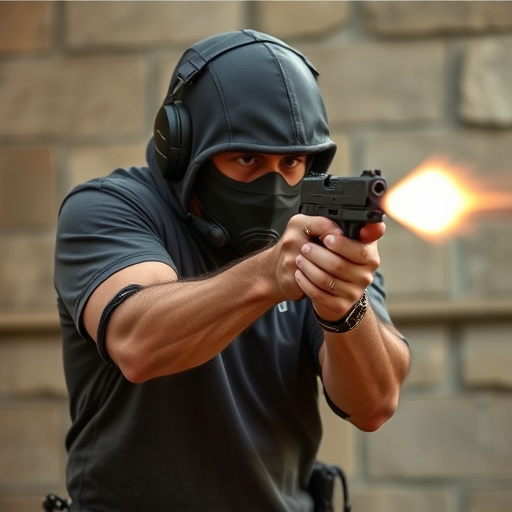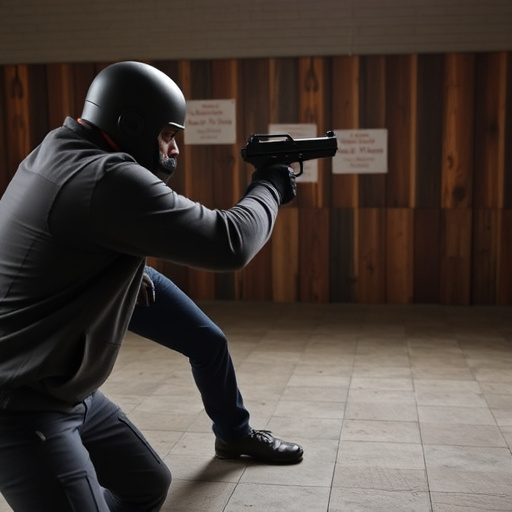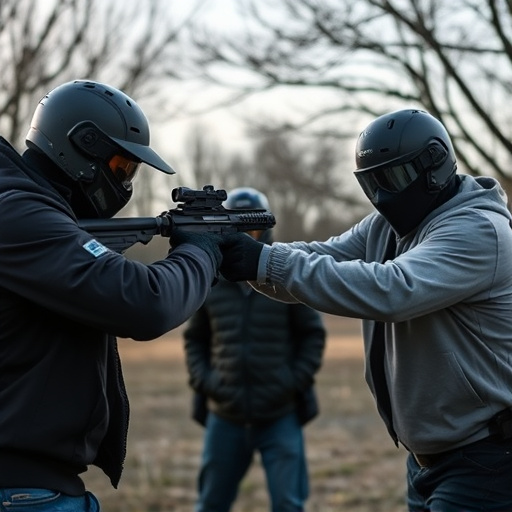Non-lethal weapon training certification equips individuals with skills to deploy and manage non-deadly force tools, particularly compact stun guns (ECDs), for self-defense, law enforcement or security. Training includes classroom instruction and practical sessions focusing on safety, legal considerations, and non-lethal force principles. Successful completion results in competence in handling ECDs, with a focus on choosing the best stun guns for small hands based on intended use. These stun guns offer ergonomic designs, powerful jolts, and quick deployment for individuals with smaller builds, enhancing accessibility and user control in self-defense scenarios.
“Unleash your personal safety with a non-lethal weapon certification, empowering you to protect yourself effectively. This comprehensive guide delves into the ins and outs of training and certifying for non-lethal weapons, focusing on stun guns suitable for smaller hands. From understanding the legal framework surrounding these devices to exploring their numerous benefits, we’ll equip you with knowledge. Discover top picks among the best stun guns tailored for individuals with smaller grasp sizes, ensuring you’re prepared and confident in your self-defense capabilities.”
- Understanding Non-Lethal Weapon Training and its Certification Process
- Choosing the Right Stun Guns: A Guide for Small Hands
- Benefits and Legal Considerations for Non-Lethal Self-Defense Weapons
Understanding Non-Lethal Weapon Training and its Certification Process

Non-lethal weapon training certification equips individuals with the knowledge and skills to deploy and manage non-deadly force tools effectively. This is particularly relevant for those interested in self-defense, law enforcement, or security roles. The process involves rigorous training in various non-lethal weapons, including stun guns designed for compact hands. Stun guns, also known as Electronic Control Devices (ECDs), are powerful tools that use electric current to temporarily incapacitate a target, making them ideal for self-defense scenarios without causing permanent harm.
The certification process typically includes classroom instruction on weapon safety, legal considerations, and the principles of non-lethal force. Students learn how to choose the best stun guns for small hands based on their intended use, ensuring comfort and control during deployment. Practical training sessions allow individuals to gain hands-on experience with different models, refining their technique and ensuring they can respond appropriately in real-life situations. Certification is granted upon successful completion of both written exams and practical demonstrations, ensuring that users are competent and responsible in their handling of non-lethal weapons.
Choosing the Right Stun Guns: A Guide for Small Hands

When considering non-lethal weapon training, especially for individuals with smaller hands, choosing the right stun gun is paramount. Many traditional stun guns might feel bulky and difficult to grip, but there’s a growing market for compact models designed specifically for those with smaller builds. These best stun guns for small hands often feature ergonomic designs, lightweight frames, and powerful jolts to ensure effectiveness without compromising comfort or control.
Several manufacturers offer options tailored for women and individuals with smaller statures. Look for features like slim profiles, palm-fitting grips, and adjustable straps. Such considerations not only make these stun guns more accessible but also enhance the user’s ability to deploy them quickly and accurately in self-defense situations.
Benefits and Legal Considerations for Non-Lethal Self-Defense Weapons

Non-lethal self-defense weapons, also known as less-lethal tools or alternative force options, offer a range of benefits for personal safety and security. One of the primary advantages is their ability to incapacitate or deter an attacker without causing permanent injury or death. This is particularly appealing for individuals who want to protect themselves while minimizing the risk of harm. For example, stun guns, one of the most popular non-lethal options, use electrical current to disrupt muscle control, allowing users to disable an assailant temporarily. Best stun guns for small hands are designed with ergonomic features that make them easy to wield, ensuring anyone can use them effectively.
From a legal perspective, non-lethal weapons provide a clearer framework for self-defense. Many countries have specific laws governing their use, often allowing citizens to carry these devices for personal protection under certain conditions. Unlike lethal force, the use of non-lethal weapons is generally subject to less stringent regulations and may be justified in situations where an individual feels their life or safety is threatened. This legal clarity can offer peace of mind to those considering self-defense options, especially when choosing tools like stun guns that are designed for ease of use and effectiveness in various hand sizes.
Non-lethal weapon training certification empowers individuals to protect themselves effectively while adhering to legal boundaries. By understanding the benefits and proper handling of non-lethal self-defense weapons, such as the best stun guns suited for smaller hands, you can make informed decisions for your safety. Certifying in these tools ensures responsible usage, enhancing your peace of mind and ability to navigate potentially dangerous situations with confidence.
